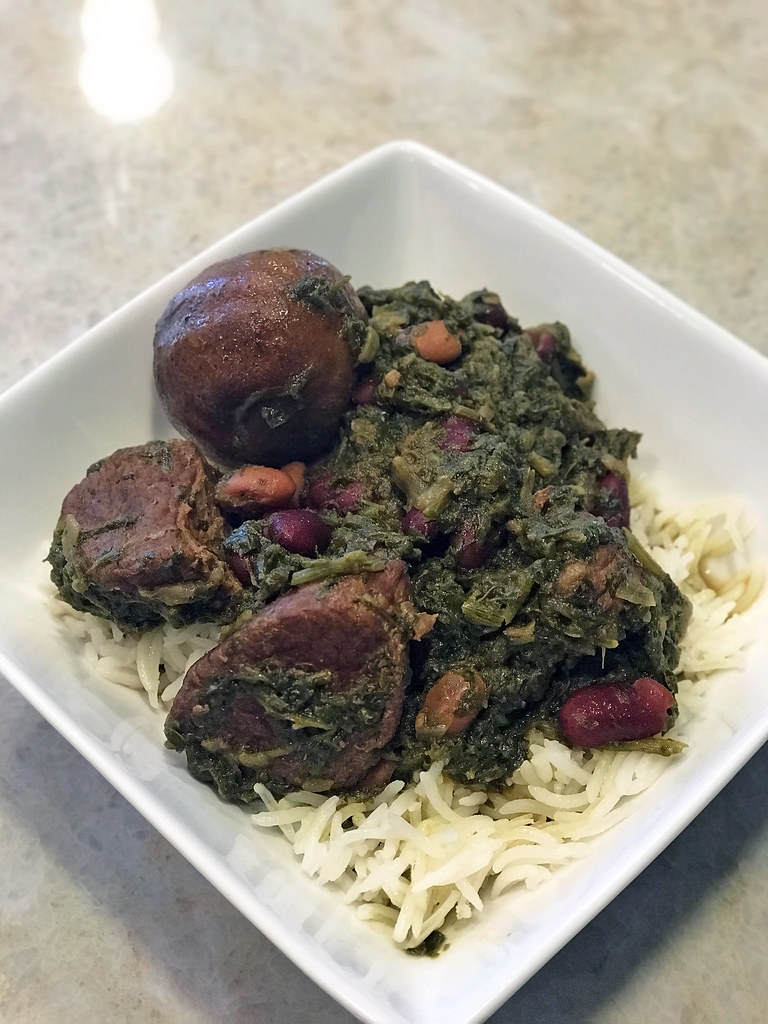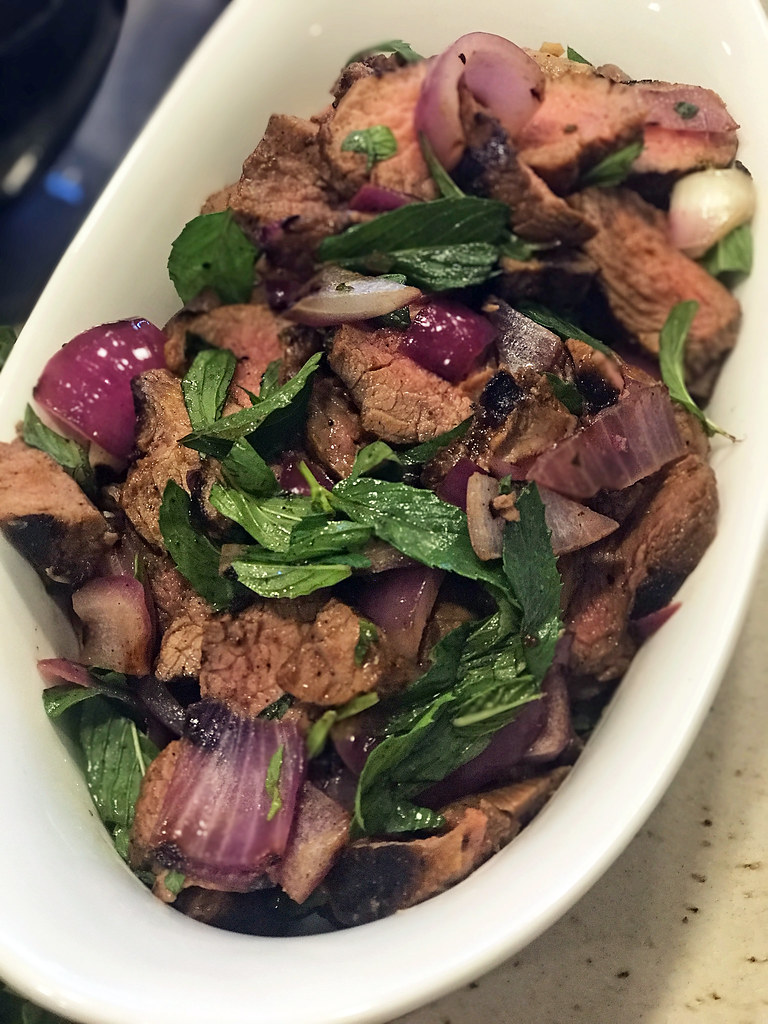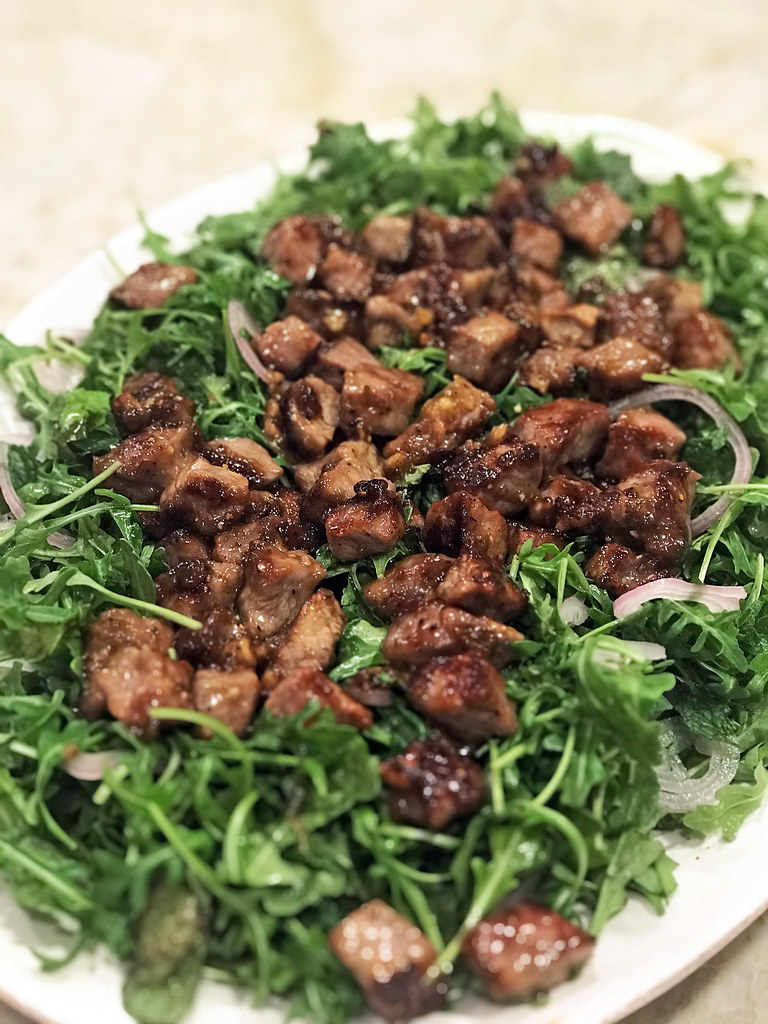Is there any dish as beloved by Iranians as this green braise of herbs, dried limes, and lamb? (Okay, maybe chelo kabab). Ghormeh sabzi is nearly everyone’s favorite #uglydelicious khoresh, and for good reason. All fenugreek all day every day.
Some cooks like to grind their dried limes, but I usually leave them whole for this dish. It’s just personal preference.

Ingredients:
For the lamb:
2 tablespoons oil or ghee
2 onions, peeled and chopped
1 1/2 teaspoons salt
1 teaspoon pepper
1 teaspoon turmeric
1 1/2 pounds boneless leg of lamb, cut into 2 or 3-inch pieces
3/4 cup kidney beans, soaked in water overnight, drained and rinsed
6 dried Persian limes, pierced
For the herbs:
2 tablespoons oil or ghee
3 cups finely chopped parsley
1 cup finely chopped green onions or Persian chives (tareh)
1 bunch spinach, finely chopped
1/4 cup dried fenugreek leaves or 1 cup chopped fresh fenugreek
1/4 cup fresh lime juice
1. To cook the lamb: Heat oil in a large laminated cast-iron pot over medium heat and saute the onions and garlic until lightly golden. Add salt, pepper, and turmeric and saute for 1 minute. Add the lamb and saute for 5 to 10 minutes until golden brown.
2. Add the kidney beans and dried limes and saute for 1 minute. Pour in 5 cups water. Bring to a boil, reduce heat to low, cover, and simmer for 30 minutes, stirring occasionally.
3. Prepare the herbs: In a wide skillet, heat oil over medium heat and saute the parsley, green onions, spinach, and fenugreek for 20 minutes, stirring until the aroma of the herbs rises. Be very careful to not burn the herbs.
4. Add sauteed herbs and lime juice to the pot. Cover and simmer over low heat for 1 to 1 1/2 hours, stirring occasionally.
5. Check to see if meat and beans are tender. Adjust seasoning if needed by adding more salt or lime juice to taste. Cover and keep warm until ready to serve. Serve with steamed basmati rice.




